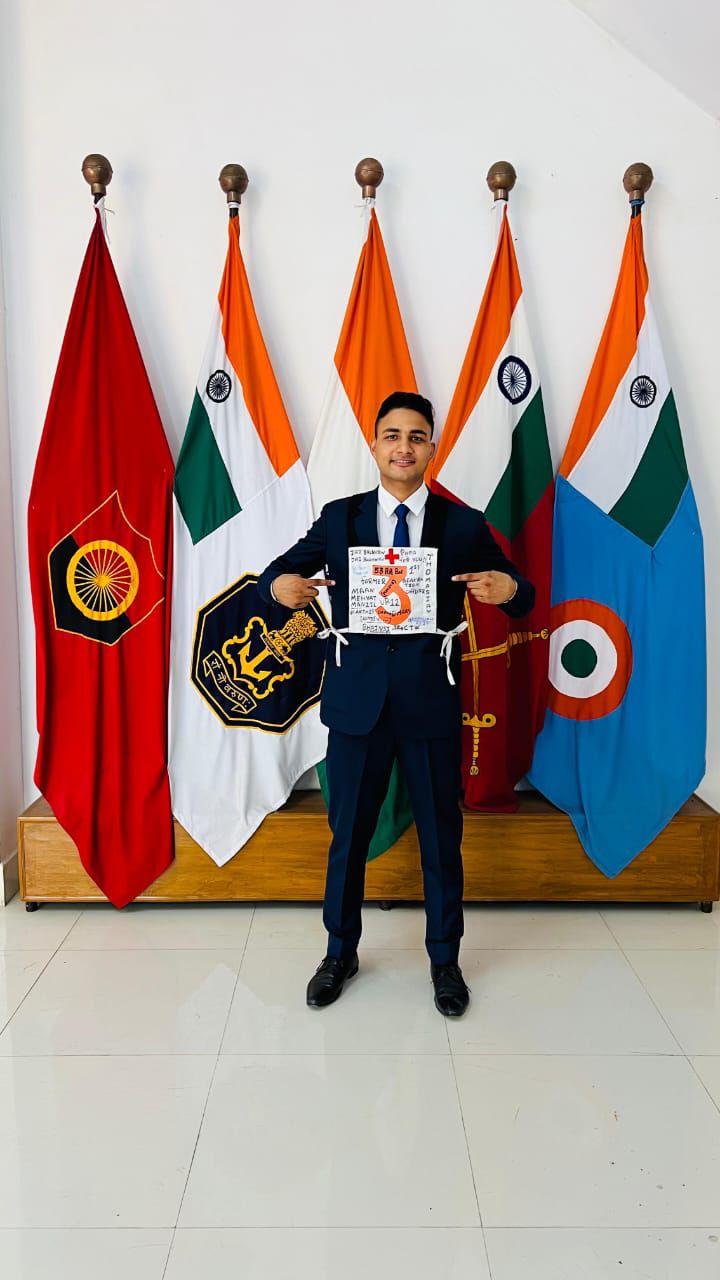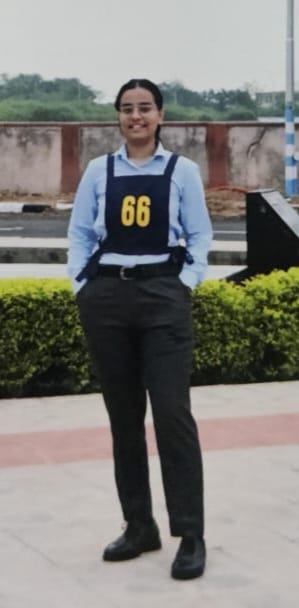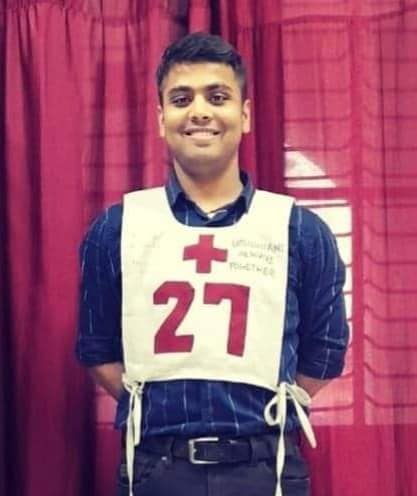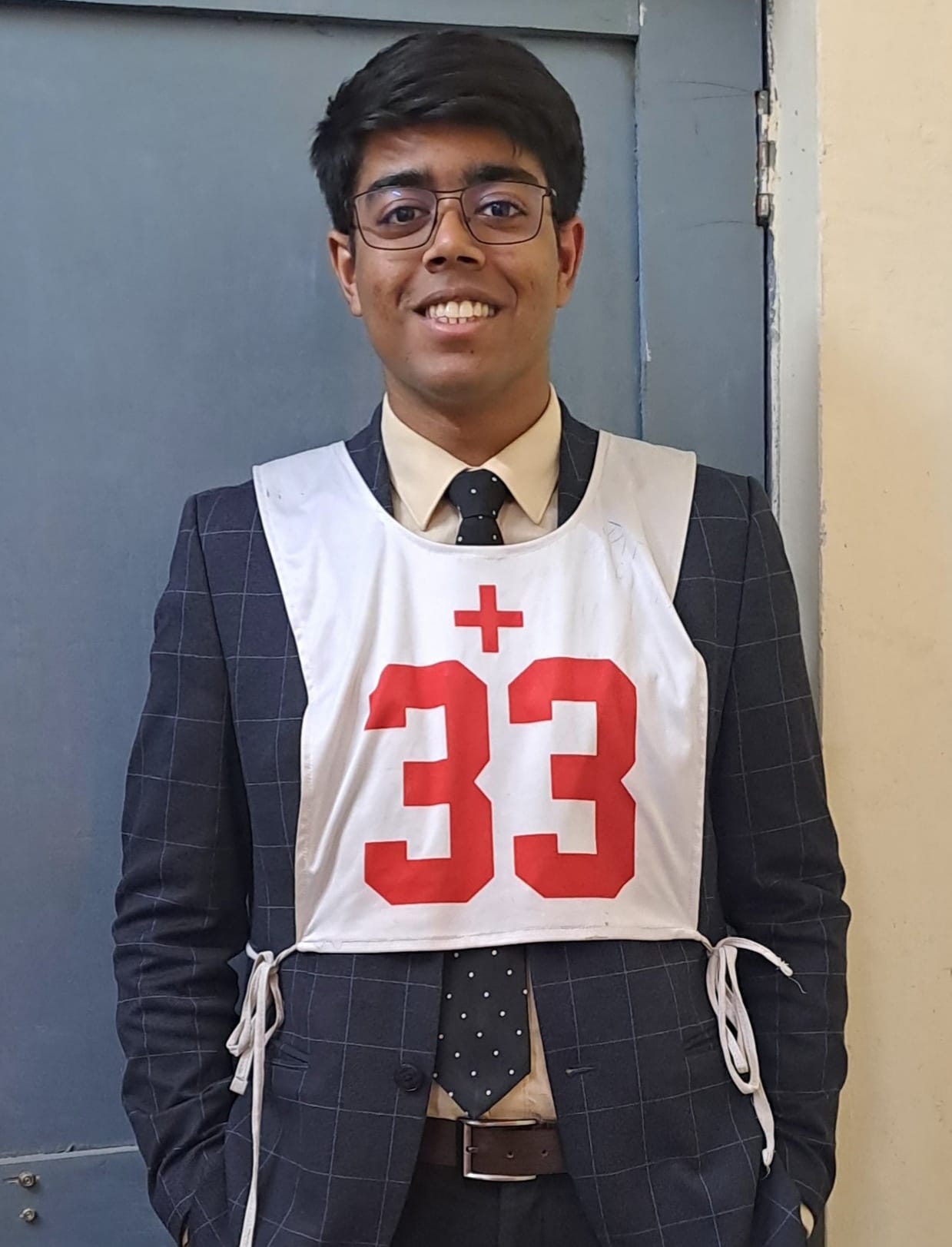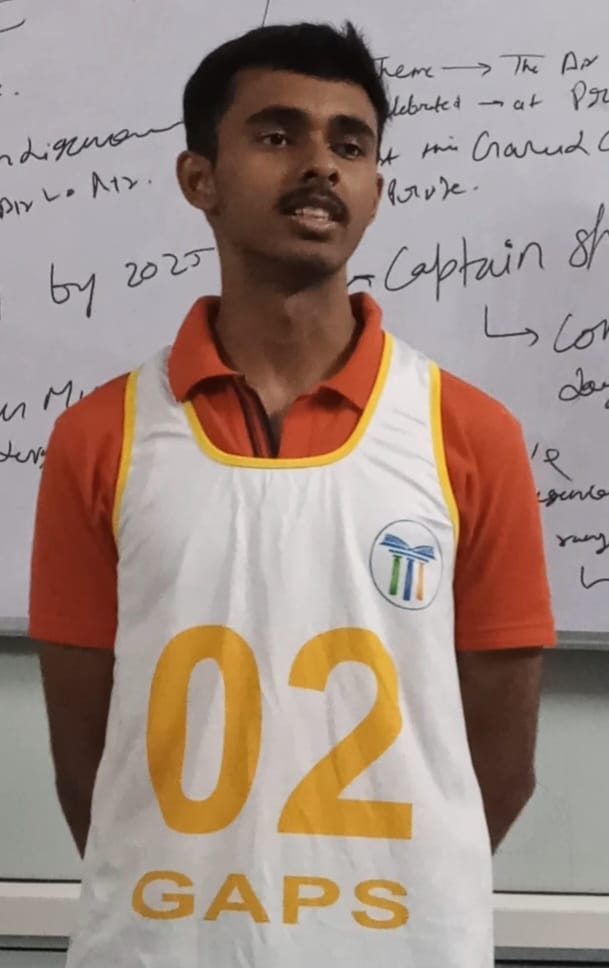The previous article focussed on the weapons used in times of ancient military history like catapults, swords, bows and arrows. The period from the Indus Valley Civilization upto the Mauryan Empire consisted of battles which were predominantly on land. This article will focus on the weapons used in the Golden Age and the Classical Age.
The Golden age gave rise to advancements in naval capabilities and now the battles were not only on land but also across the seas.
Satavahana Dynasty
This dynasty ruled over regions of South India. A lead coin was found with an image of a ship on them, directing us towards the fact that the advancements in the navy had begun. The ships voyaged overseas after sea trade routes were opened during 30 BCE across the Arabian Sea.
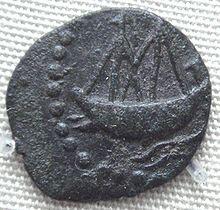
Image Source : Wikipedia (Lead coin discovered with a ship on it in the Satavahana Dynasty)
There is not much information available about the advancements of weaponry at that time. Probable reasons behind it could be the absence of any notable advancements of weapons during the Golden and Classic Age. There was only one dynasty that was greater than all others in terms of advancement in weaponry and it was the Gupta Dynasty.
The Gupta Dynasty
The Gupta Dynasty had a very strong army which ruled over parts of Central, East and South East India during 375 AD and most of North and Central India during 450 AD. One of the most important components of their infantry were the archers. They used a longbow made using metal or bamboo. Meanwhile their arrows were made out of bamboo and had a metal head. Horsemen and horse archers could be defeated with the Indian longbow which was useful for long range attacks. It could also serve as a defensive measure to protect the forts. They also used fire arrows to attack elephants because a normal arrow wouldn’t panic the elephants or damage their armor. The archers were protected by men with shields, javelins and swords.

Image Source : Google (Weapons of Gupta Dynasty)
Apart from this, they had light infantry consisting of swordsmen and cavalry archers who rode horses. The heavy cavalry also rode elephants. There is an eight grams gold coin which depicts Chandragupta II on a horse with a bow in his left hand. Prominent positions in the army like the commander in chief or senapati wore armor made out of metal or animal skin or parts of animals.
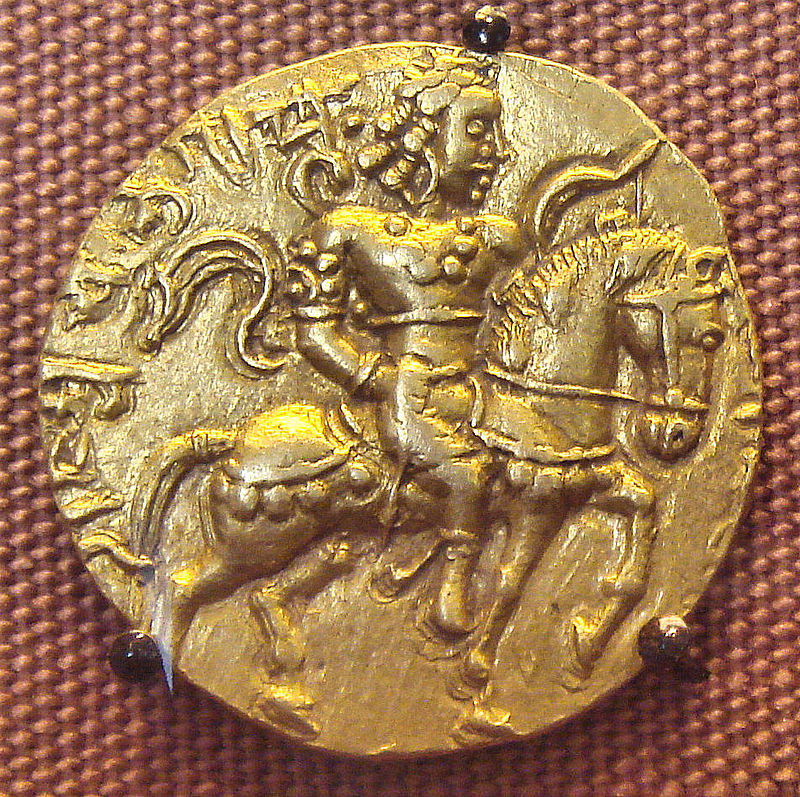
Image Source : Wikipedia (Chandragupta II on a horse with a bow in his left hand)
The Gupta Dynasty had new advancements to the military. They had Siege Engines which were either movable or fixed and had the capability to destroy walls,castles or forts. Some of the examples of Siege Engines are Catapults and Battering Rams. Battering rams were made out of wood with a metal point at the end. They were used to break down gates, doors and walls. There are inscriptions which mention that the Gupta dynasty also had ships. They had a navy which helped them assert their dominance over the surrounding waters and to provide protection against pirates.
The Cholas
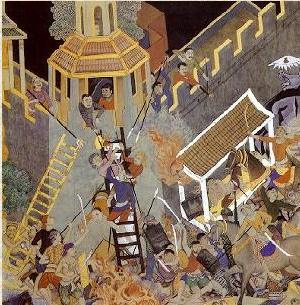
Image Source : Wikipedia (A Siamese painting depicting the Chola raid on Kadaram (kedah))
The Cholas were strong in regions of South India. Not only did they have cavalry, infantry and elephants similar to the Gupta dynasty, but they also had Asia’s largest navy. South India is surrounded by the sea and therefore huge importance was given by this kingdom to strengthen the Navy.
The Cholas had Naval Ports and Inland Ports. They had a huge variety of ships which were made for specific purposes in the war. Some of the warships used were Dharani, Loola, Vajra and Thirisadai. Dharani was a fast ship and had good durability but it couldn’t carry the battle all by itself. Hence, it was used along with other ships. Loola was a ship which had light armor and was used as convoy ships with capabilities of minimum or little combat. Vajra was a stronger ship than Loola and had better armor and was more suitable for attacks. Thirisadai was a massive battleship which was ironclad or heavily armored and was used to attack enemy ships as it had big guns. This was the time when the Naval Ships went on expeditions and controlled the seas. They sent naval ships to Sri Lanka and Malayan Peninsula, Jawa, Sumatra and Borneo.
They had military camps known as Kadagams across the country for the army. The main components of this military were archers and swordsmen. There was a famous material in South India called Wootz steel and this material was used by the Chola dynasty for their swords, bows, javelins, spears and shields. Wootz steel is an alloy of steel which was invented in Tamil Nadu.
There was also a 500 paise Postage Stamp issued by the Department of Posts to commemorate Rajendra Chola 1 which depicts a ship on the Indian Ocean.

Image Source : Google
Paramara Dynasty
Mamata Chaudhary in her journal “Ship-Building in the Yuktikalpataru and Samararigana Sutradhara'', throws light on the process of ship building by King Bhoja of Malva. It originally records the kind of ships used with or without cabins. It also records a particular ship called the Agramandira with a cabin which was used for naval warfare and long distance travel. King Bhoja ruled during the 11th Century which was during the Classical Age. He’s one of those kings from the past who are still celebrated as “ patrons of art, literature and sciences”. He had knowledge of a wide range of topics from arts to science.
Conclusion
From beginning to the end, one seems to notice a lot of changes that have taken place across eras, indicating the astonishing advancements in the army. Major developments happened at the time of golden and classical age that one fails to notice unless thrown light upon. Much importance was then given to improve the Maritime forces. Ships became an important part of the navy as sea-trades routes were established. While on the surface of the earth, Elephants and horses continued to be an important asset in Indian Armed forces, which has served as a common link between the ancient, golden and the classical eras.





